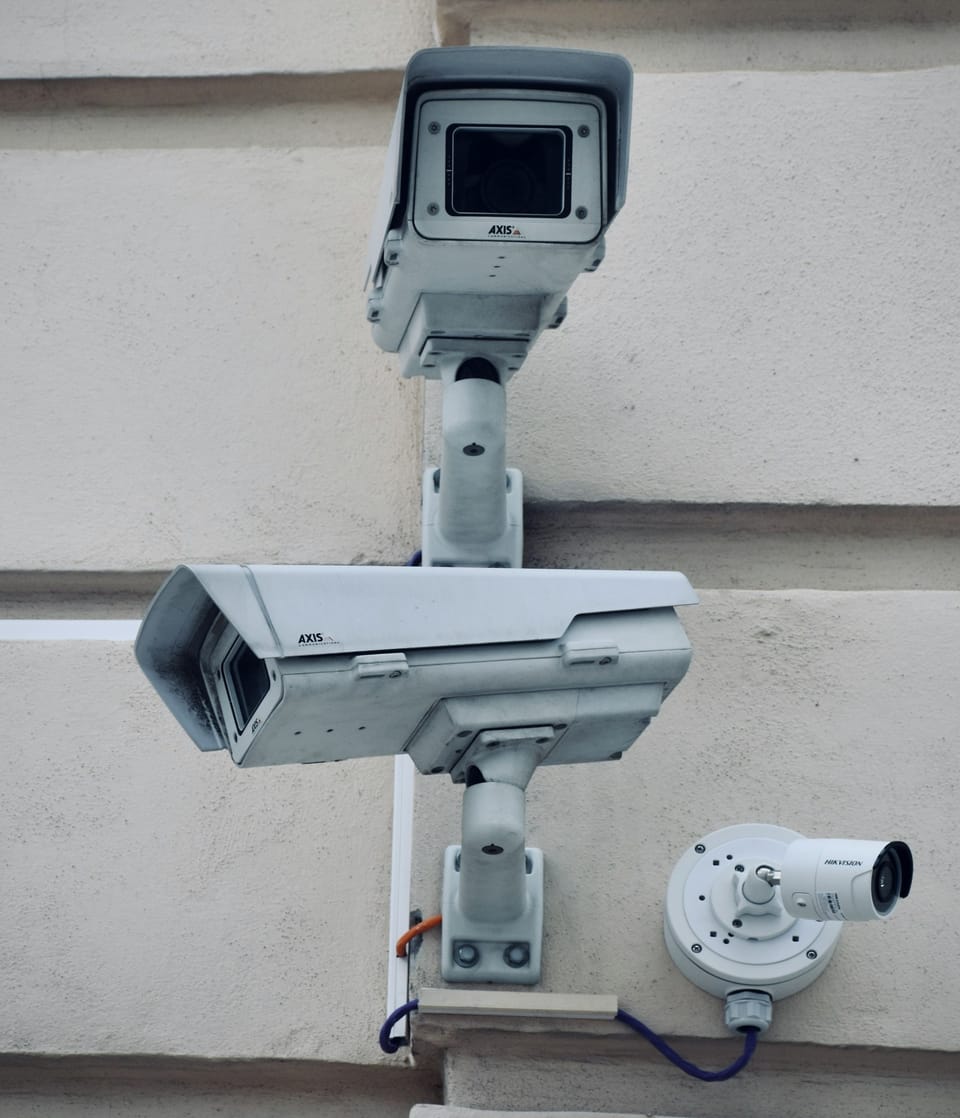Digital Combat, The WhatsApp Con, Unwanted Attention, Open Access, Apples on Steroids, and Speaking the Right Language. It's CISO Intelligence for Monday, 6th October 2025.
Battle has commenced, preying on trust, not ready for deep close-ups, when being locked out means unprotected, really serious upgrades, and sweet-talking the sale.

Table of Contents
- When Oracles Panic, Extortionists Win
- The WhatsApp Worm That Oughta Squirm: SORVEPOTEL Raises Its Head
- Portals Under Siege: Palo Alto Networks' Frantic Fortification
- Cybersecurity Gloom: Government Shutdown Blues
- iPad Pro M5: The Tablet That Ate Your Laptop's Lunch
- How Risk Assessments Can Finally Win Friends and Influence People
When Oracles Panic, Extortionists Win
Just when you thought your day was going well, hackers decided to take an unauthorized peek at their inner Oracle.
What You Need to Know
Oracle's E-Business Suite customers are under attack as hackers send extortion emails exploiting known software vulnerabilities. Google has flagged this as a high-volume campaign with demands soaring to $50 million. The ransomware ring is potentially tied to Russian-speaking cybercriminals, infamous for selling their software and infrastructure as a service. Executives are urged to prioritize system upgrades immediately and engage with cybersecurity teams to mitigate risks.
CISO focus: Incident Response, Ransomware Protection, Vendor Management
Sentiment: Negative
Time to Impact: Immediate
Oracle's E-Business Suite customers have recently been thrust into a cyber melee, as hackers launch a series of extortion emails capitalizing on software vulnerabilities. As Google and Oracle scramble to put out fires, it becomes abundantly clear: the black hats have no intention of taking a rain check on your organization's security woes.
The Extortion Rally: High Stakes and Unseen Faces
This cyber campaign — marked by a deluge of extortion emails — highlights the audacity and precision of cybercriminals in exploiting known weaknesses. Those targeted span the gamut of Oracle's corporate clientele, echoing an urgent call-to-action for organizations: shield your digital assets, fortify defenses, and brace for potential fallout.
Who's Behind the Curtain?
While the cyber syndicate's members remain elusive, research flags them as a Russian-linked or Russian-speaking ransomware-as-a-service (RaaS) group. The modus operandi involves leasing their infrastructure so that other nefarious actors can profit, all the while retaining a loyal wallet-share.
Extortion Figures: Eye-Watering Demands
Cynthia Kaiser, from Halcyon's Ransomware Research Center, disclosed ransom demands ranging from millions to a staggering $50 million. The terms of these cyber coercions suggest a level of sophistication and desperation that's startling even by cybercrime benchmarks.
Oracle's Rallying Cry: Upgrade and Secure
In response, Oracle has taken to digital pulpits urging clients to promptly install security patches. It's a familiar tune: "Upgrade or face the music." Regretfully, the number of affected clients remains under Oracle's lock and key, with citations from Google painting a picture of a "high volume" offensive, albeit with scant additional detail.
Cybersecurity Space For Process Improvement
The overarching narrative is one of reaction and containment, underscoring a timely reminder: in the world of cybersecurity, preparedness isn't just power — it's survival. Organizations are behooved to integrate proactive defense strategies, where timely patch management acts as both a sword and shield against capricious digital marauders.
The Broader Landscape for Cyber Defenders
At the crux of this digital debacle is a fundamental question: how do companies prevent being marionettes in the hackers' malicious theater? The answer lies in robust incident response plans and powerful partnerships with cybersecurity firms as guardians on the digital frontier.
Software Vendors: Allies or Bystanders?
Vigilance must also extend to scrutinizing software vendors' security postures, less they be found wanting. Suppliers must carry the torch of cybersecurity developed alongside their products — not merely behind them. Checking in, but also checking out these vendors with due diligence becomes the bedrock for reliable cyber defenses.
As Oracle navigates this mire of extortion threats, one thing is glaringly apparent: if Lady Luck favors the prepared, so too does cyber resilience lean towards the vigilant.
Being hacked might suck, but failing to patch is worse. In the cyber cosmos, staying one step ahead is not a marathon — it's a relay you cannot afford to drop the baton in.
Vendor Diligence Questions
- What are the current patch management practices and how swiftly are known vulnerabilities addressed?
- How transparent is the vendor about its internal security measures and incident management?
- What guarantees and support do vendors offer in the event of a breach affecting their software?
Action Plan for CISO Teams
- Immediate Upgrades: Verify and ensure all instances of Oracle's E-Business Suite are patched to the latest versions.
- Incident Response Drills: Conduct simulations and bolster incident response protocols, ensuring clarity in chain-of-command and action steps.
- Vendor Security Evaluation: Assess Oracle's and other pivotal vendors' security assurances and response commitments.
- Employee Vigilance Programs: Reiterate risks of cyber extortion and phishing attacks to all employees, encouraging immediate reporting of suspicious communications.
Sources:
- Reuters: "Oracle says hackers are trying to extort its customers"
- Google Security Blog
- Halcyon's Ransomware Research Center report
The WhatsApp Worm That Oughta Squirm: SORVEPOTEL Raises Its Head
When malware spreads faster than gossip on a group chat, there's a problem.
What You Need to Know
Recent reports have uncovered a new self-propagating malware, named SORVEPOTEL, targeting WhatsApp users worldwide. Leveraging the popular messaging app, this malware spreads through enticing messages with malicious links. Cyber intelligence teams must immediately close this vulnerability by enhancing security protocols, educating users, and developing a responsive communication strategy.
CISO focus: Malware Analysis and Messaging App Security
Sentiment: Strong Negative
Time to Impact: Immediate
The SORVEPOTEL Epidemic
The digital world is reeling from a new form of malware ingeniously using WhatsApp's trusted network to spread like wildfire. Named SORVEPOTEL, this self-spreading menace tricks users into downloading malicious payloads by sending seemingly harmless messages from contacts. As millions fall under its spell, the cyber community is in a race against time to neutralize this threat.
Setting the Scene
- Discovery: Identified by researchers earlier this month, SORVEPOTEL has taken a stealth approach to infiltration, primarily targeting trusted peer-to-peer messages.
- Propagation: Unlike traditional methods, SORVEPOTEL exploits the social trust users have in WhatsApp, circulating through direct messages with malicious links once an initial infection occurs.
Danger in Numbers
- Scope of Impact: Initial estimates suggest over 20 million WhatsApp users have potentially been exposed, and numbers are rising steadily.
- Target Demographic: Every WhatsApp user is at risk, but younger, less vigilant demographic groups are especially susceptible.
Modus Operandi
- Mechanism: The malware is delivered via shared media or URLs. Once a recipient clicks, it downloads automatically, embedding itself into the device’s system.
- Replication: With access to WhatsApp contacts, it instantaneously spreads further, akin to a chain reaction.
Addressing the Threat
Breaking Down Defenses
- Vulnerability: Researchers point out that WhatsApp's encryption, while robust for privacy, is a double-edged sword, frustrating malware detection efforts.
- User Confusion: Many users mistake infected messages as trivial spam due to their unexpected yet familiar source.
Countermeasures
- Software Updates: Tech teams must prioritize updating apps to address vulnerabilities exploitable by SORVEPOTEL.
- Education Campaigns: Launching awareness initiatives to teach users how to recognize and respond to phishing attempts rapidly is crucial.
Tech Surgeons At Work
- Research Collaboration: Entities like Malwarebytes and Kaspersky Lab are pooling resources to dissect SORVEPOTEL and fortify defensive mechanisms.
- Cyber Hygiene: Encouraging better digital practices—like frequent data backups and robust anti-virus systems—fends off infection.
Need for Immediate Action
Strategic Importance
- Reputation and Trust: Rapid containment is vital not only for user protection but also to preserve WhatsApp's hard-earned reputation in secure communications.
- Continuing Readiness: Proactive measures today ensure sturdier defenses against similar future attacks exploiting trusted networks.
Call for Innovation
- Enhancement of AI systems: Utilizing AI for real-time threat detection within encrypted environments is increasingly indispensable.
- Public-Private Partnerships: Strengthening collaboration between tech giants and cybersecurity firms establishes a united front against multifaceted malware like SORVEPOTEL.
The Inevitable March Onwards
As long as digital communications evolve, so too will the cunning operations seeking to exploit them. While the world mobilizes to suppress SORVEPOTEL, vigilance remains paramount to secure our interconnected digital lives.
Vendor Diligence Questions
- How does your product mitigate risks from self-spreading malware like SORVEPOTEL?
- What real-time monitoring capabilities do you offer for encrypted communication channels?
- How frequently is your security protocol updated to counter newly identified threats?
Action Plan
- Immediate Blocking: Engage with WhatsApp and other tech platforms to block known SORVEPOTEL payload URLs.
- Threat Intelligence Sharing: Adjust cybersecurity frameworks for instant information sharing between organizations.
- User Mobilization: Initiate communication to educate users on recognizing phishing attempts and reporting suspicious activities.
Source: Researchers Warn of Self-Spreading WhatsApp Malware Named SORVEPOTEL
Portals Under Siege: Palo Alto Networks' Frantic Fortification
When the watchers become the hunted, it’s time to ramp up reinforcements.
What You Need to Know
The cybersecurity community is on high alert after a staggering 500% surge in scanning activity targeting Palo Alto Networks' portals was recorded within a single day. This uptick indicates that threat actors may be probing for vulnerabilities within these systems, potentially laying the groundwork for future cyberattacks. Executive management should ensure the CISO and IT teams are implementing the necessary defensive measures, auditing current security postures, and coordinating with vendors to manage and mitigate risks effectively.
CISO focus: Network Defense
Sentiment: Strong Negative
Time to Impact: Immediate
In an unprecedented uptick, Palo Alto Networks, a leader in network security, faces an alarming cyber threat as recent data reveals a 500% spike in scanning activity on their portals within just one day. This significant rise in probing activity has sent shockwaves across the cybersecurity landscape, signaling potential forthcoming attacks as cybercriminals aim to exploit undiscovered vulnerabilities.
A Tidal Wave of Scans
The drastic increase in scanning activities was first identified by cybersecurity researchers who monitor anomalous network behaviors. Such a surge typically signifies that hackers are actively searching for vulnerabilities within systems that, if found, could be exploited to access sensitive data or take control of critical infrastructure. The implications of such vulnerabilities are severe, as they could lead to major breaches causing extensive operational and financial damage.
What’s at Risk?
-
Data Compromise: With potential breaches on the horizon, data stored within these networks is at risk of exposure, theft, or tampering. This includes confidential business information, personal data, and proprietary technologies.
-
Reputational Damage: A successful cyberattack on such a high-profile network security firm would undermine the perceived security and trustworthiness of their solutions, potentially affecting customer loyalty and revenue streams.
-
Industry-Wide Ripple Effect: Given Palo Alto Networks' significant presence in the cybersecurity industry, a compromise could set off a chain reaction, impacting numerous businesses relying on their technologies for protection.
Response from Palo Alto Networks
As of the latest reports, Palo Alto Networks has ramped up its defensive measures and is working collaboratively with cybersecurity experts to scrutinize incoming and outgoing network traffic. Their proactive stance includes updating threat intelligence, patching known vulnerabilities, and enhancing monitoring systems to detect and thwart potential intrusions.
Moreover, the organization has communicated with its clients, advising them to perform comprehensive audits and ensure all their systems are up to date with the latest security patches. Regular penetration testing is also encouraged to uncover and address potential vulnerabilities before they can be exploited.
The Cyber Community’s Reaction
This surge in cyber scanning activity has unified the broader cybersecurity community in scrutinizing network defenses. Analysts are advocating for a collective effort to share intelligence, leveraging industry insights to fortify defenses across the board.
Cybersecurity forums and social media platforms are abuzz with discussions, dissecting potential motives behind the increased scanning activity. Some speculate the involvement of sophisticated threat actors, possibly backed by state-affiliated entities, given the scale and speed of the spike.
Pondering the Road Ahead
The path forward demands unyielding vigilance and adaptation. As the threat landscape evolves, organizations must anticipate and respond faster than potential adversaries. In the words of one industry expert, “Complacency is our greatest enemy, in cybersecurity, agility is key to survival."
With a resolute stance on security, companies must engage in routine security drills, enforce strict access controls, and cultivate a security-minded culture among employees. Building robust incident response plans and investing in advanced cybersecurity technologies are essential steps in fortifying defenses against such escalating threats.
Vendor Diligence Questions
- How frequently does Palo Alto Networks conduct audits and patch management processes to identify and rectify potential vulnerabilities?
- What mechanisms are in place to ensure real-time threat intelligence sharing between vendors and clients?
- How does Palo Alto Networks ensure the integrity and security of their supply chain against cyber threats?
Action Plan
-
Immediate Security Audit: Direct the IT team to conduct a thorough security audit of all systems using Palo Alto Networks solutions, ensuring no known vulnerabilities are left unpatched.
-
Enhanced Monitoring: Increase monitoring of network activities for unusual patterns, implementing advanced threat detection mechanisms.
-
Staff Training: Conduct regular training sessions for staff on the latest cybersecurity best practices, focusing on phishing prevention and rapid incident reporting.
-
Collaboration: Foster open communication channels with vendors and industry groups to leverage shared intelligence and collaboratively tackle cyber threats.
Source: Scanning Activity on Palo Alto Networks Portals Jump 500% in One Day
Cybersecurity Gloom: Government Shutdown Blues
When the government naps, cyber threats clap.
What You Need to Know
The recent U.S. federal government shutdown has inflicted significant disruptions in cybersecurity operations, raising red flags among federal IT leaders. During the shutdown, critical cybersecurity initiatives were stalled, compromising the security posture of federal systems. For executives, a looming concern is the potential exposure to cyberattacks due to diminished surveillance and staffing in key cybersecurity functions. Leadership is expected to evaluate contingency plans and enforce stricter security protocols to mitigate future risks.
CISO focus: National Security & Cyber Threat Management
Sentiment: Negative
Time to Impact: Immediate
When the Government Shuts Down, Cybersecurity is Left Out in the Cold
In an era tainted by evolving cyber threats and persistent data breaches, the recent U.S. federal government shutdown signals an unsettling lapse in cybersecurity defense mechanisms. This breach of operational continuity underlines the paradox that while cyber criminals remain tirelessly vigilant, federal cybersecurity efforts hit a snag every time politically induced paralysis occurs.
Cybersecurity in the Crossfire
During this shutdown, key resources within the cybersecurity domain witnessed:
- Operational Stagnation: Federal agencies were forced to put a pause on non-essential activities, inevitably affecting cybersecurity initiatives and plans.
- Resource Shortage: With furloughs in place, scarce cybersecurity personnel were left to shoulder the burden, leaving gaps in defense and monitoring systems.
- Delayed Projects: Important projects, including system upgrades and implementations, were interrupted, leading to possible vulnerabilities ripe for exploitation.
Looming Threats
The cessation did not go unnoticed—cyber adversaries are known for leveraging periods of weakened governmental infrastructure to launch attacks. Without full surveillance and operational capacity, the likelihood of successful cyberattacks increases, threatening national security and integrity.
Shoring Up the Defenses
As the government resumes operations, priority actions must include:
- Rapid Risk Assessment: Conduct an immediate assessment of systems to identify any vulnerabilities that may have arisen during the shutdown.
- Timely System Hardening: Swiftly implement upgrades and patches postponed during the furlough to fortify defenses.
- Enhanced Monitoring: Augment monitoring operations temporarily to ensure that any anomalous activities are detected promptly.
Unintended Consequences
Apart from the apparent security concerns, the shutdown highlighted procedural inefficiencies that could be exploited by malicious actors. The need for a robust and sustainable contingency plan became glaringly evident, emphasizing resilience and adaptability in future instances of government cessation.
Policy Intervention
Federal policymakers are called to:
- Enforce legislation that insulates critical cybersecurity operations from political impasses.
- Allocate emergency funding for cybersecurity that remains accessible during governmental crises.
- Establish inter-agency communication protocols to sustain basic operational functions under shutdown scenarios.
The Final Firewall
While cybersecurity professionals have adapted to fluctuating conditions, persistent government-induced interruptions are intolerable. Recognizing the strategic importance of sustained cybersecurity operations can no longer be deferred. It's time for the government’s own systems to become as unyielding and resilient as the networks they aim to protect.
Vendor Diligence Questions
- How does your organization manage continuity of cybersecurity services during government or other institutional shutdowns?
- What contingency plans are in place to ensure uninterrupted cybersecurity operations and staffing during periods of reduced government activity?
- How quickly can your firm respond to rapid risk assessments post-shutdown to mitigate potential vulnerabilities?
Action Plan
- Conduct a Security Audit: Immediately task your teams with a comprehensive security audit to identify any emergent vulnerabilities.
- Increase Threat Intelligence Sharing: Foster robust communication channels with federal partners and intelligence agencies for real-time threat intelligence.
- Implement Catch-up Protocols: Fast-track delayed software updates and security patches across all systems.
- Review Emergency Funds: Ensure secure access to reserved emergency cybersecurity funds that can be utilized during shutdowns.
- Revisit Contingency Plans: Review and modify existing continuity and response plans to be robust against future instances of operational disruption.
Source: News brief: Cybersecurity weakened by government shutdown
iPad Pro M5: The Tablet That Ate Your Laptop's Lunch
If you thought tablets were just oversized phones, think again.
What You Need to Know
Apple's latest iPad Pro featuring the M5 chip has surfaced in leaked benchmarks demonstrating performance levels that rival and even surpass some laptop CPUs. Executives should be aware that the computing landscape is shifting, with mobile devices encroaching upon traditional laptop territory. Adopting these advancements may lead to reduced hardware costs and increased mobility for teams. Implementing this tech into your strategic plans could provide significant competitive advantages.
CISO focus: Endpoint & Device Management
Sentiment: Strong Positive
Time to Impact: Short (3-18 months)
The Next-Gen Processor Power
The latest leak from Apple's innovation pipeline is shaking up the tech world. A benchmark report has surfaced, revealing that Apple's new iPad Pro's M5 chip exhibits performance capabilities that not only rival but are faster than some existing laptop CPUs. This development signifies a turning point in how we perceive the power of mobile devices, and the implications for businesses and everyday users could be profound.
The Details: What's Inside the M5?
The leaked benchmarks suggest that the M5 chip, integrated into the iPad Pro, offers significant enhancements in both single-core and multi-core processing speeds. This is a leap forward from its predecessor, the M1 and M2 chips, and squares off against high-performance laptops currently dominating the market. It puts Apple on a pedestal, confirming its commitment to erasing the lines between mobile devices and traditional computing machines.
- Single-core performance: The iPad Pro M5 exhibits exceptional single-core processing capabilities that can enhance tasks demanding precision and speed.
- Multi-core performance: With a robust multi-core performance, the M5 is optimized for multitasking, offering seamless transitions between applications and processes.
Implications for Businesses
The potential of iPad Pro M5 in enterprise environments cannot be understated. Its capacity for handling complex computational tasks effortlessly may lead to a reevaluation of current hardware procurement strategies across various sectors.
Mobile computing revolution: The M5 brings mobile computers much closer to replacing laptops for professional use, significantly advancing corporate mobility and flexibility.
Cost-efficiency and scalability: Businesses may reduce costs by leveraging the iPad Pro as a laptop alternative, tapping into its power while investing in fewer hardware resources.
End-to-end security management: While impressive, the shift towards using more mobile devices necessitates increased vigilance in endpoint and information security. The sudden switch might expose existing vulnerabilities if not managed properly.
The Competitive Edge
Apple's commitment to pushing the boundaries of chip technology is reflective of the growing need for efficient yet powerful mobile solutions. Their strategy aligns with market trends towards remote work and workplace flexibility.
- Consumer marketplace impact: As consumers experience these advancements, demand for traditional laptops might decline, reshaping the market dynamics.
- Innovation stimulation: Competitors will likely be compelled to innovate further, resulting in a faster-paced evolution of tech products.
The Tablet Apocalypse: Are Laptops Done For?
While it is tempting to think of this as the 'end of laptops,' the reality is more nuanced. Laptops still hold value, particularly for graphically intensive work that requires larger screens and more ergonomic designs. However, for everyday business tasks, the iPad Pro M5 could very well close the gap, becoming a go-to solution for technology enthusiasts and corporate users alike.
Vendor Diligence Questions
- How does the M5 chip enhance energy efficiency compared to previous chips, and what implications might this have for device longevity?
- What security enhancements come with the iPad Pro M5, and how do they align with our current cybersecurity posture?
- How does Apple plan to support enterprises in transitioning their workflows from laptops to the new iPad Pro, particularly regarding compatibility and integration with existing IT systems?
Action Plan
- Evaluate Compatibility: Technological leaders should assess current applications and systems to understand compatibility with the iPad Pro M5.
- Security Assessment and Readiness: Conduct an audit of security protocols to handle the shift towards more mobile computing devices in the organization.
- Cost-benefit Analysis: Financial teams should analyze potential cost savings compared to maintaining or upgrading existing laptop inventories.
- User Training: Set up training programs to familiarize employees with the new capabilities and functionalities of iPad Pro M5.
Source: Leaked Apple iPad Pro M5 benchmark shows it's faster than some laptop CPUs from Bleeping Computer.
How Risk Assessments Can Finally Win Friends and Influence People
Make your risk assessments as juicy as your board wants them.
What You Need to Know
Cybersecurity remains a top priority, yet risk assessments often get lost in translation between technical teams and executive management. This article explores how to transform those dry reports into powerful tools for decision-making. Executives are expected to champion clear communication and allocate the necessary resources for effective implementation.
CISO focus: Risk Management and Communication
Sentiment: Positive
Time to Impact: Short (3-18 months)
Understanding the Appeal of Risk Assessments
Cyber risk assessments have traditionally been viewed as esoteric exercises reserved for cybersecurity professionals. They're often seen as obligatory checkpoints rather than insightful compasses that can guide business strategy. However, recent strategies underscore the value of turning risk assessments into compelling narratives the executive board can't afford to ignore.
Speak the Language of the Boardroom
Risk assessments should no longer be dense collections of metrics and technical jargon. To ensure they stick, reports need to be redesigned with narrative flair, visually engaging charts, and emphasis on business impacts. Remember, your audience likely cares less about the intricacies of malware vectors than about potential effects on revenue streams and brand reputation.
- Use storytelling: Frame your cybersecurity risks in relatable terms. For example, what does a potential data breach mean not only in technical terms but also for customer trust and market position?
- Visualize your data: Employ charts, graphs, and infographics that succinctly display areas of risk and recommended actions.
- Prioritize impact over detail: Focus on what could happen and how it correlates to business objectives rather than bogging down in technical details.
Transforming Skeptics into Advocates
Turn the boardroom skeptics into policy advocates by showing them exactly why investing in cybersecurity is not just necessary but advantageous. Real-world examples, case studies, and trend analysis can provide the convincing shove that stakeholders often need to get on board.
Leverage Compliance and Brand Protection
While the specter of regulatory compliance looms large over all communications, it's helpful to reposition this inevitability from a mere "checkbox" to a brand preservation endeavor. Compliance efforts mean more than avoiding penalties; they signify commitment to consumer protection and long-term viability.
Quantify the Unquantifiable
Risk often entails probabilities that resist easy calculation. Still, a strong argument can be made by assigning a cost to inaction. Ask, what will it cost the company if a risk becomes a reality? This approach convinces key decision-makers that the investment in cybersecurity pays dividends in potential threat reduction.
Risk Assessments as Strategic Tools
Ultimately, risk assessments must evolve from static documents into dynamic components of business strategy. When companies see them as opportunities for improvement rather than as liabilities surfacing bad news, the role of CISOs transforms.
Train and Inform
A well-informed board is crucial. Regular training sessions and informational updates can help ensure that executives understand the significance of their cybersecurity investments. Over time, familiarity breeds proactivity rather than complacency.
Collaborate for Buy-In
Encouraging cross-departmental participation in developing risk assessments can help to create a cohesive, shared sense of ownership and obligation. By involving different facets of the organization, you foster a collaborative atmosphere where cybersecurity isn’t just the IT team’s problem, but everyone’s priority.
Vendor Diligence Questions
- How do your tools and services align with our risk assessment goals?
- Can you provide examples or case studies where your solutions improved decision-making or strategy alignment?
- What strategies do you employ to keep your risk assessment methodologies in line with emerging threats?
Action Plan
- Redefine Communication: Create a cross-functional team to develop a prototype risk assessment report that embodies the narrative approach.
- Enhance Training: Implement training sessions for board members focused on understanding risk assessments as strategic assets.
- Engage Stakeholders: Initiate quarterly meetings with stakeholders to evaluate the effectiveness and reception of revised risk assessments.
Sources:
- 6 Ways to Make Your Risk Assessments Land With Stakeholders | UpGuard
- Schneier, B. (2019). Data and Goliath: The Hidden Battles to Collect Your Data and Control Your World.
- Cybersecurity & Infrastructure Security Agency (CISA) Resources, 2023.
CISO Intelligence is lovingly curated from open source intelligence newsfeeds and is aimed at helping cybersecurity professionals be better, no matter what their stage in their career.
We're passionate advocates for good cybersecurity at home, at work, and in government.
Thank you so much for your support!
CISO Intelligence by Jonathan Care is licensed under Creative Commons Attribution-NonCommercial-NoDerivatives 4.0 International




